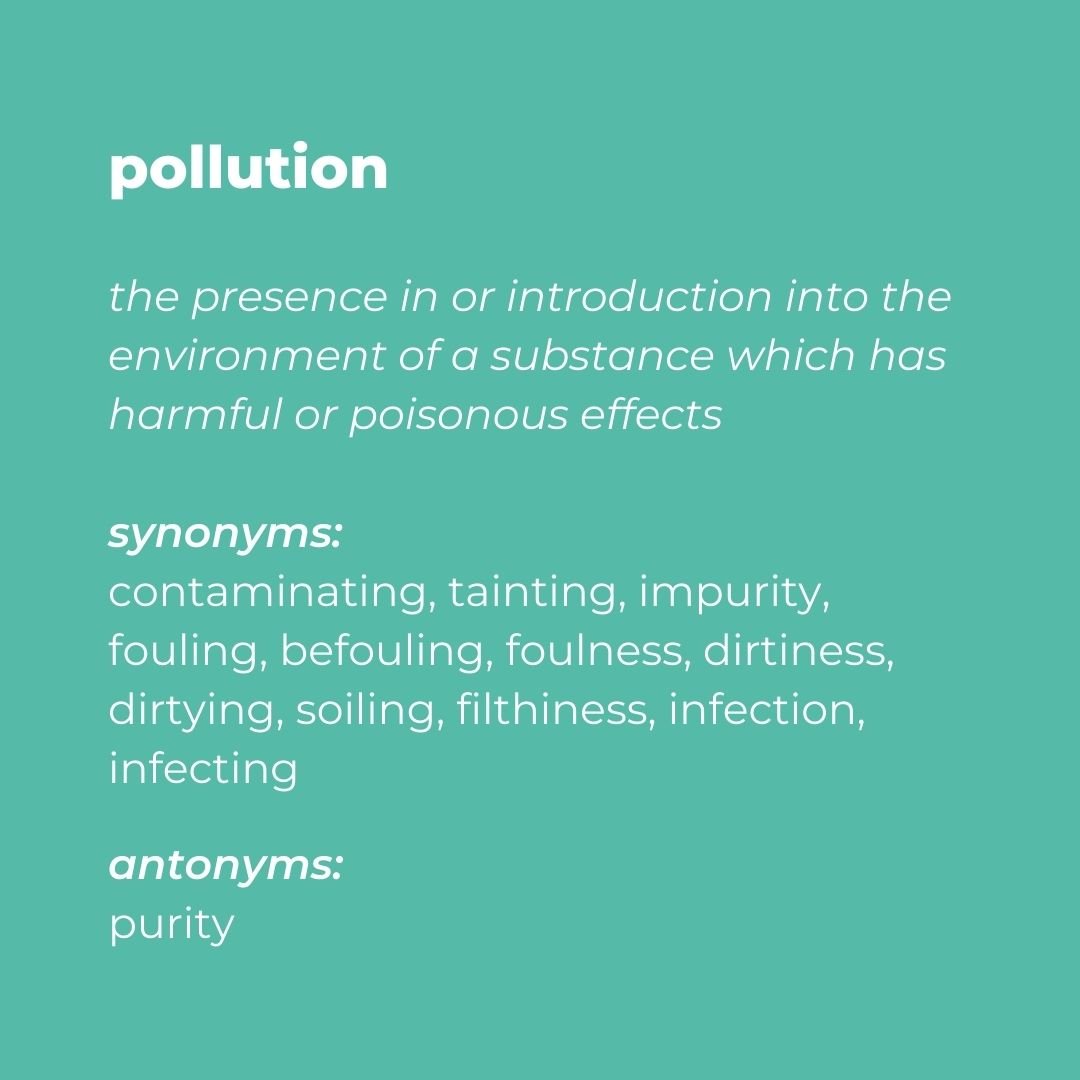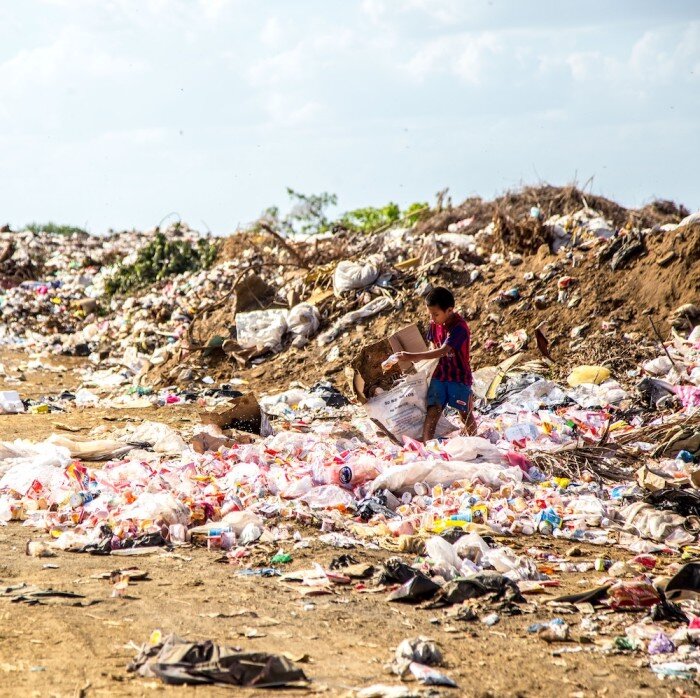
Pollution
… Even the small things like recycling our waste
Can make a difference to the problems we face…
Nearly everything we do creates waste that has to go somewhere, unfortunately some of this waste is hurting our planet. When we add harmful things to our environment it is known as pollution. In this section you can learn more about what pollution and the different types, including air, land and water pollution as well as noise and light pollution.
*Remember to check out the Glossary at the bottom of the page
What is pollution?
Pollution is a word that we have all heard of, but what exactly does it mean?
Pollution happens when our environment is contaminated or dirtied, by waste, chemicals or other harmful substances. Unfortunately, this happens because of human activities and these ‘pollutants’ can harm not only us but all living things on planet Earth.
It is easy to blame big companies and factories for pollution but much of the mess is created by everyday activities such as driving a car, creating excess rubbish and using too much energy.
The main forms of pollution: air, water, land, noise and light.
“And unless we free ourselves from a dependence on these fossil fuels and chart a new course on energy in this country, we are condemning future generations to global catastrophe. ”
Air Pollution
Air pollution is when unwanted chemicals, gasses and particles enter the air and the atmosphere, some of these ‘pollutants’ may be poisonous.
Some air pollution occurs naturally from volcanic eruptions, forest fires and dust storms. However much comes from human activity including factories, the burning of fossil fuels (oil, coal, gas) to create energy, from cars and other vehicles, spray cans and also the gases from animals and those released from landfill sites.
Air pollution and the release of these gases into the environment can have many negative effects:
The gases that increase the earth’s temperature are called greenhouse gases which are responsible for global warming and contribute to climate change.
Acid rain is created when gases such as sulphur dioxide are released into the atmosphere. These gases combine with rain to form ‘acid rain’ and can damage our forests and kill fish.
Air pollution can also make people very sick; when the air is polluted some people can find it difficult to breathe which can lead to asthma and other serious respiratory conditions. Smog is a severe type of air pollution created when smoke and fog is combined, often occurring in busy, dirty cities; it can be very dangerous to people’s health. According to the World Health Organization, 2.4 million people die each year from air pollution.
“Climate change should be treated as an emergency. Instead, we have world leaders playing for time and trying to negotiate with science.”
Land Pollution
Land pollution is the destruction of the Earth’s land surface and occurs when waste is not disposed of properly and when harmful chemicals are used on the land such as fertilisers and pesticides. Land pollution can also occur as a result of mining activities that cause destruction to the Earth’s surface.
These are the main types of land pollution:
Solid waste: This includes paper, plastic, bottles, cans, food, old cars, electrical equipment as well as old furniture and clothes. Some of these things will get recycled and some are biodegradable, so these will eventually break down or decompose but others, such as plastic items will not. These items end up in landfill sites where they will stay for many thousands of years.
Fertilisers and pesticides: Many farming activities use fertilisers to improve the crop and also pesticides and insecticides to protect it, however they can be harmful to the environment. These chemicals easily enter the food chain and can be toxic; the rain can also wash the chemicals away and over time they can enter the water table.
Chemicals: Manufacturers of chemicals and nuclear power plants produce both solid and liquid waste that has to be carefully stored, however there is a risk that they may end up in landfill or leak into the environment.
Deforestation: Humans have cut down millions of acres of trees for wood, construction, farming and mining purposes; new trees have not been planted as a replacement. This is a type of land pollution.
Land pollution is one of the most visible types of pollution; you can often see rubbish on the streets or you may even see a landfill site which not only damages our environment but also threatens to harm otherwise healthy ecosystems. Polluted land or soil will be unable to support plants that in turn, are needed to support animal life. Many harmful chemicals can be extremely dangerous to human health, causing many serious diseases if they get into our bodies. Landfill sites also release methane gas, a greenhouse gas that contributes to global warming.
“Forests… are in fact the world’s air-conditioning system — the very lungs of the planet — and we are on the verge of switching it off.”
Water Pollution
Water pollution occurs when waste, chemicals or other particles cause a body of water, such as a river, lake, sea or groundwater to become contaminated and harmful to the fish and animals that rely on it.
Some water pollution does occur naturally from algae blooms, volcano eruptions, animal waste and silt from storms and floods but a lot of water pollution comes from human activities.
There are many types of water pollution because water comes from so many sources. They include sewage that may not have been treated correctly, liquid waste from households, pesticides and fertilizers that run off the fields, waste water and chemicals from factories, shipping waste and waste from building sites as well as litter. Oil spills are also a source of water pollution, these have a huge effect on the local environment and wildlife.
Water pollution is very harmful to humans, animals and water life. The effects can be catastrophic, depending on the kind of chemicals, concentrations of the pollutants and where they are polluted:
Pollution can restrict the amount of oxygen in the water, preventing fish to breathe and destroying the local ecosystem.
Pollutants may be passed up the food chain eventually being consumed by humans.
Drinking polluted water can cause diseases like typhoid, cholera and dysentery.
Whole ecosystems can be severely changed or destroyed by water pollution.
“Water and air, the two essential fluids on which all life depends, have become global garbage cans.”
Noise Pollution
Noise pollution is also known as environmental noise or sound pollution and can have a harmful impact on human and animal life, although it is thought to have less damage on humans than water, air or land pollution. Noise or sound is measured in decibels (dB) and pollution occurs when the level exceeds 75dB, according to the World Health Organisation.
“A nation that destroys its soils destroys itself. Forests are the lungs of our land, purifying the air and giving fresh strength to our people.”
Light Pollution
Light pollution is the presence of excessive artificial or ‘man-made’ light in the night sky. It is a major side effect of city-life but can also disrupt ecosystems. For example, bright lights can confuse animals such as birds as well as newly-hatched marine turtles.
“Environmental pollution is an incurable disease. It can only be prevented.”
Glossary
acid rain: A form of air pollution caused from harmful gases combining with water and oxygen in the air
atmosphere: A layer of gases that surround the Earth
climate: The usual weather condition in one area
ecosystem: A community of living organisms (plants and animals) in a particular area
global warming: An increase in the surface temperature of the Earth
greenhouse gases: Gases that form an invisible blanket that trap the Sun’s heat
pollution: The introduction of a harmful substance into the environment
pollutants: A substance that makes something such as air or water impure and or unsafe









